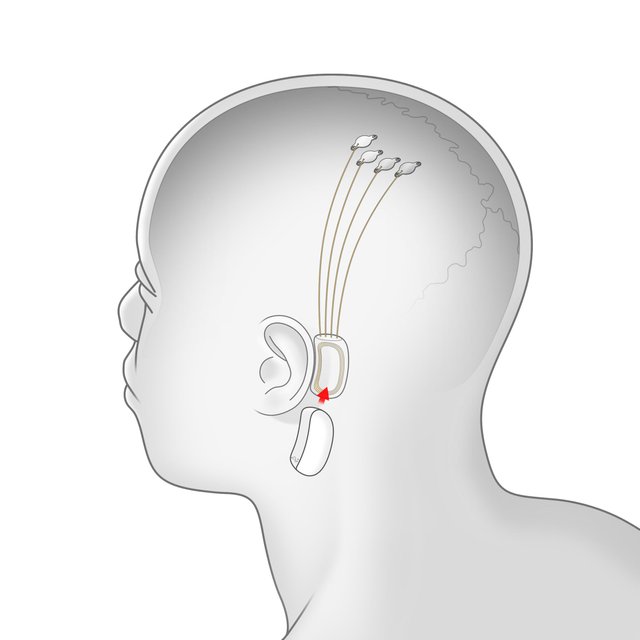// Techno NEWS // Elon Musk Wants to Implement his Brain-Machine Interface on Humans from 2020
The start-up Neuralink has already tested its device on animals and succeeded in sending information from their brains to a computer. It now says it is ready to move on to man.

Source
Is Elon Musk on the way to fulfilling the dream of any good transhumanist, namely to merge the human being and the machine and thus prevent humanity from one day being overtaken by the performance of robots?
We are still far from that. But its start-up Neuralink says it is ready to test a device capable of connecting our brain to a computer on humans from 2020. However, it remains to obtain authorization from the Food and Drug Administration.
A surgical robot operating as a sewing machine
At a press conference held on Tuesday evening in San Francisco, Elon Musk presented the project in detail for the first time.
His team intends to insert flexible threads with tiny electrodes into the brain using the fine needles of a robot that would function as a kind of sewing machine. The wires would all be connected to a box fixed under the ear.
In the first place, it will be necessary for a surgeon.... drills tiny holes in the skull under general anesthesia. But in the longer term, a laser beam could accomplish the job in an operation as light and painless as that of correcting myopia.
The whole thing will still be risky because we will have to avoid blood vessels.
The idea would then be to capture the information contained by the neurons and transmit it to the box, which would contain a chip to amplify the signals emitted by your neurons.
The box would then send the wireless data to a computer to decrypt it. The patient would control the device via a simple mobile application.
Successful tests on animals
During a meeting the day before with a few journalists in Elon Musk's absence, Neuralink executives unveiled a demonstration on a rat in their laboratory.
The system was not yet able to communicate wirelessly, requiring a USB-C port attached directly to the animal's head and connected to a computer.
But this has shown that it is already possible to recover ten times more information than with current technologies thanks to thousands of tiny electrodes implanted next to rat neurons and synapses.
19 such operations have already been performed on animals, including monkeys.
On the application side, Elon Musk promises first and foremost to better understand how the brain works. It should also help amputees to regain their mobility or disabled people to compensate for a lost sense such as sight or hearing.
In the long run, we can hope that these patients will be able to manipulate their smartphone or computer with the impulses of their brains.
Goal: to attract talent
But Elon Musk is well aware of the immensity of the challenge ahead. His company needs cutting-edge scientists and he made no secret of the fact that the main objective of this press conference was to attract talented people.
Collaborations with neurosurgeons at Stanford University are already planned. He plans to work with the team of epilepsy specialist Jaimie Henderson, who uses deep brain stimulation treatments.
Brain implants are not a first. The CEA, for example, has developed an implant activating an exoskeleton to move tetraplegics. One operation was even successfully completed in 2017.
Other interventions have also been used to boost the memory of some patients and restore their cognitive functions. However, each time they were very localized implants, sending only electrical impulses or just connecting the brain to prostheses.
The Grail remains to be able to permanently connect the brain to a computer, which is currently only possible by using electroencephalogram headsets. There are several projects with this ambition, including the Kernel company created by Bryan Johnson.
Neuralink stands out for the complexity and scope of the electrode array that would be introduced into the brain, the innovation of its robot and the way in which wireless information is transmitted. Elon Musk founded the company in 2017 and invested $100 million of the $158 million in seed money. The company now has 90 employees.
How do you feel about this? Are you for or against?
Sources : Neuralink Launch Event and The NY Times

I've made a lot of articles with tools, explanations and advises to show you how to protect your privacy and to secure your computer, GO check them out!
This is my guide To Secure your PC after a fresh installation of Windows
If you think that your Phone or your PC has been hacked, you have to check it right now!
That's how you can be more Anonymous on the internet!
The Future of Cyber-Security, what to expect?
The best Crypto debit card – Wirex!
These are the best VPN to protect your numeric life: NordVPN, ExpressVPN and CyberGhost!
Your PC is slow? That's why!
Why is it important to Be Discreet on the Internet
Feel hot? Your Computer also!
How an Adware works?
That's how you should guard against Trojan!
What are the different Types of hackers?





This is cool and all, I just worry about 1 getting hacked, 2 government entities and such reading your mind and 3, the impact of the economy, and if we will even really need the educational system that we have today anymore?